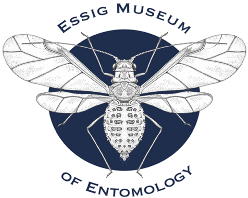My research program focuses on understanding the mechanisms of animal behavior, as well as the ecological and evolutionary consequences of those behaviors. I integrate mechanistic, ecological, and evolutionary approaches to ask research questions such as:
I use research questions in biomechanics, cognition, and communication to understand the ecological and evolutionary basis of behaviors. I study behaviors of arachnids (harvestmen, spiders, and amblypygids), insects (treehoppers), in both tropical and temperate regions. My questions are grounded on organismal biology and natural history, and my research uses methods such as field and lab observations and experiments, as well as videography, coding, and statistical modeling to quantify and understand behaviors and phenotypic diversity. Additionally, ongoing collaborations complement my research with technics in chemical ecology and phylogenetics.
The current and future big picture topics of my research program includes: (1) decisions-making in many axes of behavior, including navigation, grouping, and reproduction, (2) the evolution of shared and divergent communication mechanisms, and (3) how biomechanical and physiological mechanisms shape behavior. These topics are feasible to study in harvestmen, spiders, treehoppers, and birds, across environments. I intend to continue conducting research in Costa Rica, and the US Midwest.
With specific groups I have been interested in:
Harvestmen (Opiliones): chemical communication, cooperation, grouping behavior, site fidelity, locomotion, micro-habitat selection, and the effect of losing legs in their behavior.
Treehoppers (Membracidae insects): behavioral repertoires, communication, and sexual selection.
Spiders: learning, web construction, sex and age differences in feeding and exploration behavior performance; reproductive behavior.
Birds: behavioral ecology, nesting, reproduction and sound communication.
Below are some pictures I've taken of animals I have studied, mostly in Neotropical rainforest, montane, and dry forest, in Costa Rica and Panamá. I have also studied arachnids in Uruguay, and California and Wisconsin, USA.
- What mechanisms underlie behaviors such as locomotion and communication?
- What is the evolutionary trajectory of behavioral traits?
- How do animals learn and make decisions in their natural and altered habitats?
- How are the responses of animals shaped by environmental pressures?
I use research questions in biomechanics, cognition, and communication to understand the ecological and evolutionary basis of behaviors. I study behaviors of arachnids (harvestmen, spiders, and amblypygids), insects (treehoppers), in both tropical and temperate regions. My questions are grounded on organismal biology and natural history, and my research uses methods such as field and lab observations and experiments, as well as videography, coding, and statistical modeling to quantify and understand behaviors and phenotypic diversity. Additionally, ongoing collaborations complement my research with technics in chemical ecology and phylogenetics.
The current and future big picture topics of my research program includes: (1) decisions-making in many axes of behavior, including navigation, grouping, and reproduction, (2) the evolution of shared and divergent communication mechanisms, and (3) how biomechanical and physiological mechanisms shape behavior. These topics are feasible to study in harvestmen, spiders, treehoppers, and birds, across environments. I intend to continue conducting research in Costa Rica, and the US Midwest.
With specific groups I have been interested in:
Harvestmen (Opiliones): chemical communication, cooperation, grouping behavior, site fidelity, locomotion, micro-habitat selection, and the effect of losing legs in their behavior.
Treehoppers (Membracidae insects): behavioral repertoires, communication, and sexual selection.
Spiders: learning, web construction, sex and age differences in feeding and exploration behavior performance; reproductive behavior.
Birds: behavioral ecology, nesting, reproduction and sound communication.
Below are some pictures I've taken of animals I have studied, mostly in Neotropical rainforest, montane, and dry forest, in Costa Rica and Panamá. I have also studied arachnids in Uruguay, and California and Wisconsin, USA.
Funding
My research has been funded by several agencies, including: (click on the image for further information)






